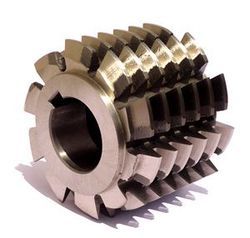Gear Shaping is a machine method that requires continuous rotational cutting in the same plane. It’s a precise cutting technique that results in a high-quality surface finish on both external and internal teeth. You can learn more about the process here. Let us see what all is gear shaping cutting all about
What is the meaning of gear shaping?
Gear shaping cutter, in addition to the variety of gear types it can make, also has the advantage of forming teeth near to the shoulders, which hobbing cannot. Gear shaping is a generating technique similar to hobbing, except it is done with the help of a cutter installed on a cutter-spindle and a gear blank held on an arbor or fixture on the work-spindle.
-
Electronic Stroke Shaping Tools
– Electronic stroke shaping tools use unique shaper head technology. They’re made to reduce vibration and maintain alignment throughout many years of use.
-
Mechanical Stroke Shaping
Machines combine the latest mechanical stroking technology with sophisticated CNC capabilities to create mechanical stroke shaping machines. Internal or external spur or helical gears, as well as a variety of non-involute forms, can be cut with these tools.
The process of gear cutting
While the cutter and work spindles are driven by separate worm and worm wheels, they are linked by changing gears to maintain the right cutter-work relationship. As a result of this synchronization, the cutter takes multiple passes through the blank, resulting in a series of closely spaced individual cuts. The shaping with a rack cutter is a good example of bringing the best results.
The cutter’s downward ‘cutting’ and upward relieving’ motion is combined in these quick reciprocating repeated passes. At the established infeed depth, each downward stroke represents a cutting motion in which the cutter and work are in mesh. The work and shaper cutter are eased on the cutting tool’s return upward stroke to avoid rubbing the work against the shaper cutter not-cutting surface.
Why is it done?
Due to its continual circular movement during operation, gear shaping is classified as a generating process. The workpiece and the tool constitute a pair of gears, with the number of teeth ratio coordinating their rotation speeds. The rolling action on the same pressure line creates the gear profile.
A stroking action of the tool is required during the operation to ensure the cutting process. The simultaneous radial feed of the tool on the required profile creates this oscillating cutting activity (cutting stroke and return stroke). The tool is raised from the gear by an unique raising system during the return stroke to avoid rubbing on the teeth flanks and considerable tool damage.
Conclusion
Fabricators have three options when it comes to gear shape, based on their specific needs and budget. Each tool and process has advantages and disadvantages that should be considered in light of the project’s circumstances and requirements. Here are the machining tools and procedures used for professional gear shape to help you better grasp gear cutting. Get in touch with the experts to know more.





